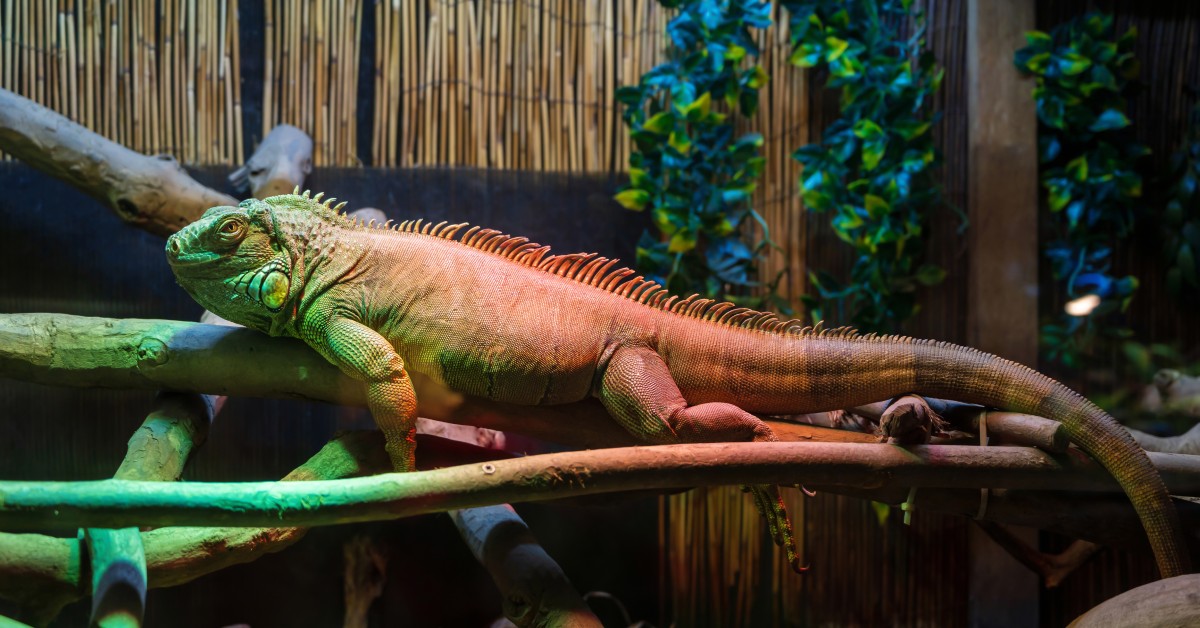Tank Temperature and Lighting for Exotic Pets in the Winter
Learn how to maintain the ideal temperature and lighting conditions for your exotic pets during the winter to keep them healthy and comfortable.

Winter weather can be tough on exotic pets, as many rely on consistent temperatures and proper lighting to stay healthy. Unlike traditional pets like cats and dogs, exotic pets like amphibians and reptiles are ectothermic, meaning they require an external heat source to regulate their body temperature. Experiencing a sudden drop in temperature or insufficient lighting can lead to serious health problems, such as lethargy, weakened immune system, and metabolic disorders.
Help your pet remain healthy and comfortable throughout the winter season by learning how to maintain proper temperature and lighting.
Special Heating and Lighting Needs of Reptiles and Amphibians
Exotic pets such as frogs, lizards, and snakes, have unique temperature and lighting requirements that help them maintain their health and well-being. Winter heating for reptiles and amphibians often involves the use of external heat sources to maintain a warm environment. Winter also presents other challenges, such as reduced humidity and shorter daylight hours, which can disrupt their natural rhythms. In some instances, dry air can cause respiratory issues in exotic pets, while problems like poor light exposure can affect their sleep cycles and activity levels.
Ideal Temperature for an Exotic Pet Habitat
Keep your exotic pet warm and comfortable throughout the winter by keeping a consistent and appropriate temperature in its enclosure. Animals such as geckos, salamanders and turtles need reliable heating sources that will not create dangerous temperature fluctuations. When ensuring a proper temperature in an exotic pet habitat, consider the following tips:
1. Choose the Right Heat Source for Your Exotic Pet
Selecting an appropriate heat source depends on the type of exotic pet you have and its specific needs. Some options may include:
- Heat Lamps – These are ideal for reptiles that like to bask, such as turtles and bearded dragons, as they provide both heat and light.
- Ceramic Heat Emitters (CHEs) – CHEs are a great option for nocturnal reptiles and amphibians as they emit heat without light, which could disturb their sleep cycles.
- Under-Tank Heaters (UTHs) – A UTH is useful for animals like geckos and some snake species, as they absorb heat from below.
- Radiant Heat Panels – These are a safe and efficient option best used for larger enclosures or arboreal species that require a steady ambient temperature.
2. Regulating and Monitoring Temperature
Maintaining the appropriate temperature for your exotic pet is essential for its well-being. Each species has its own unique requirements. For example, reptiles like bearded dragons, ball pythons, and leopard geckos require a temperature gradient with a basking spot of between 90 degrees and 110 degrees Fahrenheit, with a cooler area between 70 and 80 degrees Fahrenheit.
Amphibians, such as frogs and salamanders, need more stable temperatures to prevent stress. Ideally, their environment should remain between 65 and 85 degrees Fahrenheit. If your exotic pet is a small mammal, such as a sugar glider or hedgehog, you’ll want to avoid cold drafts and aim for a temperature between 70 and 80 degrees Fahrenheit. Pet owners with exotic birds also need to create a stable environment, somewhere between 65 and 85 degrees Fahrenheit.
3. Prevent Heat Loss
Heat loss is common in the winter when the outdoor temperature drops, often causing indoor temperatures to fluctuate. There are several ways that you can help retain warmth in your exotic pet’s habitat, such as by insulating their enclosure with foam boards, thermal curtains, or reptile-safe insulation to minimize heat loss. Also, keep enclosures away from drafts, cold floors, and windows.
Proper Lighting for an Exotic Pet Habitat
Lighting plays a key role in the health of your exotic pet, especially reptiles, which depend on UVB light to synthesize vitamin D3 and absorb calcium. Without enough UVB exposure, reptiles can develop metabolic bone disease, weakened immunity, and other health issues. In the winter when natural sunlight is scarce, providing artificial UVB lighting becomes even more essential.
To compensate for shorter daylight hours in the winter, adjust lighting schedules to mimic natural cycles. Most reptiles need about 10 to 12 hours of UVB exposure a day, while nocturnal species require low-intensity lighting to maintain their circadian rhythm. When choosing a light bulk for your pet’s enclosure, consider the following options:
- Full-Spectrum Bulbs – These bulbs replicate natural daylight for birds and small mammals.
- UVB Bulbs – These bulbs help with calcium absorption and bone health.
- Infrared or Ceramic Bulbs – These bulbs provide gentle heat for nighttime warmth.
In addition, take time to set up a proper light cycle to ensure that your pet maintains a healthy lighting routine. Proper lighting for exotic pets often involves the use of timers to automate lighting schedules and the strategic placement of bulbs at the correct distance to prevent underexposure or overexposure. UVB bulbs should also be replaced about every 6 to 12 months for optimal effectiveness.
Keep Your Exotic Pet Warm and Healthy This Winter
Proper exotic pet winter care is essential for maintaining the health and well-being of your pet during colder months. By setting up proper lighting and using safe heating options for exotic pets, you can create a comfortable environment that supports your pet’s natural behaviors and keeps them healthy all season long.
Ready to start saving money on pet wellness care?
Then take a look at Mint Wellness, the pet wellness plan that provides fast reimbursement on routine pet care. Save on vaccinations, wellness exams, preventatives, dental, and more!
Learn More